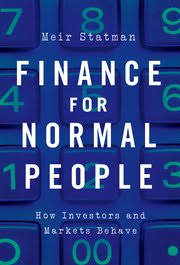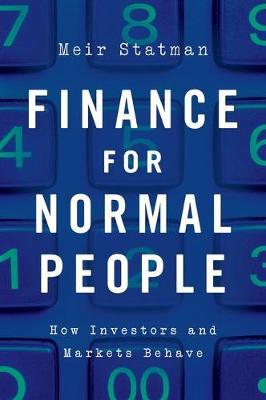Finance for the normal people
how investors and markets behave
- ISBN: 9780190057121
- Editorial: Oxford University Press
- Fecha de la edición: 2020
- Lugar de la edición: New York. Estados Unidos de Norteamérica
- Encuadernación: Rústica
- Medidas: 23 cm
- Nº Pág.: 471
- Idiomas: Inglés

Finance for Normal People teaches behavioral finance to people like you and me - normal people, neither rational nor irrational. We are consumers, savers, investors, and managers - corporate managers, money managers, financial advisers, and all other financial professionals.
The book guides us to know our wants-including hope for riches, protection from poverty, caring for family, sincere social responsibility and high social status. It teaches financial facts and human behavior, including making cognitive and emotional shortcuts and avoiding cognitive and emotional errors such as overconfidence, hindsight, exaggerated fear, and unrealistic hope. And it guides us to banish ignorance, gain knowledge, and increase the ratio of smart to foolish behavior on our way to what we want.
These lessons of behavioral finance draw on what we know about us-normal people-including our wants, cognition, and emotions. And they draw on the roles of these factors in saving and spending, portfolio construction, returns we can expect from our investments, and whether we can hope to beat the market.
Meir Statman, a founder of behavioral finance, draws on his extensive research and the research of many others to build a unified structure of behavioral finance. Its foundation blocks include normal behavior, behavioral portfolio theory, behavioral life-cycle theory, behavioral asset pricing theory, and behavioral market efficiency.
Chapter 1: Normal People
Chapter 2: Our Wants for Utilitarian, Expressive, and Emotional Benefits
Chapter 3: Cognitive Shortcuts and Errors
Chapter 4: Emotional Shortcuts and Errors
Chapter 5: Correcting Cognitive and Emotional Errors
Chapter 6: Experienced Happiness, Life-Evaluation, and Choices: Expected Utility Theory and Prospect Theory
Chapter 7: Behavioral Finance Puzzles: The Dividend Puzzle, the Disposition Puzzle, and the Puzzles of Dollar-Cost-Averaging and Time-Diversification
Part 2: Behavioral Finance in Portfolios, Life-Cycles, Asset Prices, and Market Efficiency
Chapter 8: Behavioral Portfolios
Chapter 9: Behavioral Life-Cycles of Saving and Spending
Chapter 10: Behavioral Asset Pricing
Chapter 11: Behavioral Market Efficiency
Chapter 12: Lessons of Behavioral Finance







